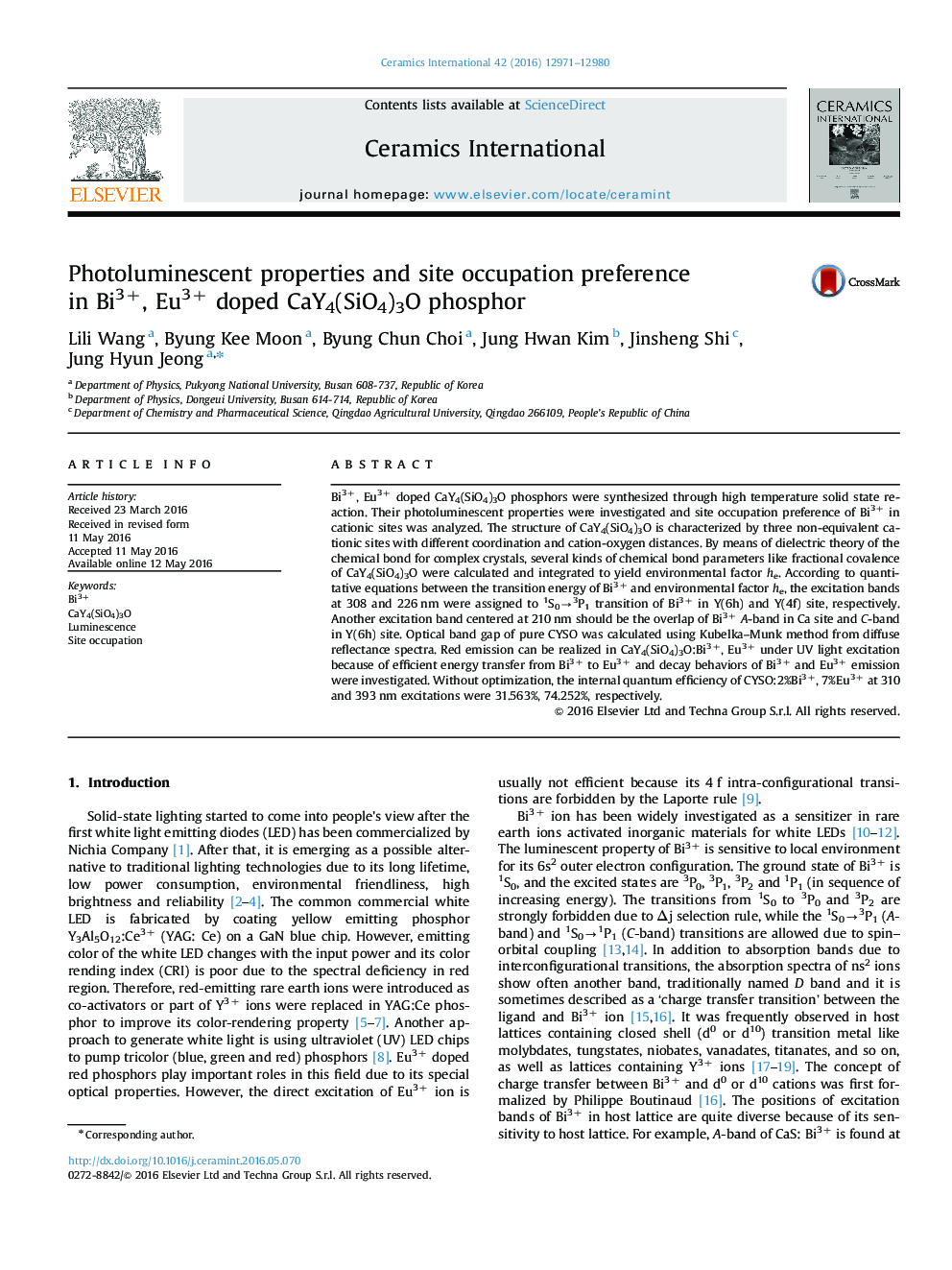| Article ID | Journal | Published Year | Pages | File Type |
|---|---|---|---|---|
| 1458747 | Ceramics International | 2016 | 10 Pages |
Bi3+, Eu3+ doped CaY4(SiO4)3O phosphors were synthesized through high temperature solid state reaction. Their photoluminescent properties were investigated and site occupation preference of Bi3+ in cationic sites was analyzed. The structure of CaY4(SiO4)3O is characterized by three non-equivalent cationic sites with different coordination and cation-oxygen distances. By means of dielectric theory of the chemical bond for complex crystals, several kinds of chemical bond parameters like fractional covalence of CaY4(SiO4)3O were calculated and integrated to yield environmental factor he. According to quantitative equations between the transition energy of Bi3+ and environmental factor he, the excitation bands at 308 and 226 nm were assigned to 1S0→3P1 transition of Bi3+ in Y(6h) and Y(4f) site, respectively. Another excitation band centered at 210 nm should be the overlap of Bi3+A-band in Ca site and C-band in Y(6h) site. Optical band gap of pure CYSO was calculated using Kubelka–Munk method from diffuse reflectance spectra. Red emission can be realized in CaY4(SiO4)3O:Bi3+, Eu3+ under UV light excitation because of efficient energy transfer from Bi3+ to Eu3+ and decay behaviors of Bi3+ and Eu3+ emission were investigated. Without optimization, the internal quantum efficiency of CYSO:2%Bi3+, 7%Eu3+ at 310 and 393 nm excitations were 31.563%, 74.252%, respectively.
